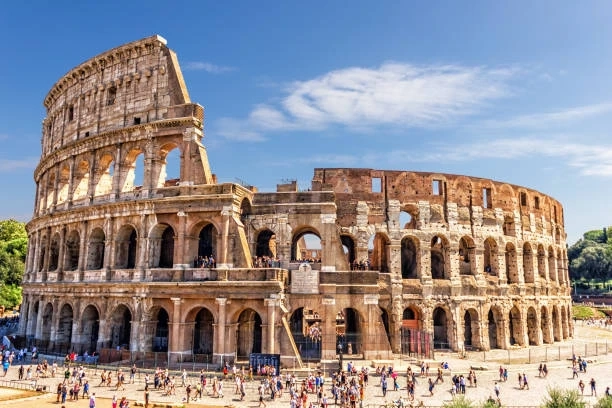The Colosseum in Rome, Italy, is one of the most iconic and historically significant landmarks in the world. With its rich history and architectural grandeur, visiting the Colosseum can be an unforgettable experience. In this article, we will guide you through everything you need to know to make the most of your visit to the Colosseum.
The Colosseum, also known as the Flavian Amphitheatre, was built in 70-80 AD and has witnessed centuries of history. It served as a venue for gladiator contests, animal hunts, and other spectacles. Today, it stands as a symbol of Rome's grandeur and attracts millions of visitors each year.
History of the Colosseum
The Colosseum was commissioned by Emperor Vespasian and completed by his son Titus. It was a marvel of engineering and architecture, capable of accommodating up to 50,000 spectators. The construction materials, such as travertine limestone and concrete, were advanced for their time.
Architecture and Design
The Colosseum features an elliptical shape with four levels and eighty entrances. The seating arrangements were based on social hierarchy, with the lower tiers reserved for the elite and upper tiers for the commoners. The underground chambers, known as hypogeum, were used to stage elaborate spectacles.
Ticket Options and Prices
To visit the Colosseum, you have several ticket options. The standard ticket includes access to the Colosseum, Roman Forum, and Palatine Hill. There are also skip-the-line tickets available, allowing you to bypass long queues. Prices vary depending on the ticket type and whether you opt for additional guided tours.
Best Time to Visit
To avoid large crowds and scorching heat, it's recommended to visit the Colosseum early in the morning or late in the afternoon. The months of November to February are generally less busy compared to the peak tourist season in summer. Consider checking the official website for updated information on opening hours and crowd levels.
Navigating the Colosseum
Upon entering the Colosseum, you'll be immersed in its grandeur. Take your time to explore different levels, walk through the underground chambers, and envision the spectacles that once took place within its walls. Signage and information boards are available to help you navigate and understand the historical significance of each area.
Highlights and Points of Interest
As you explore the Colosseum, be sure to visit the arena floor, where gladiators once battled. The underground chambers offer a glimpse into the intricate staging of events. The top levels provide panoramic views of the surrounding area, including the Roman Forum and Palatine Hill.
Guided Tours vs. Self-Guided Visits
While self-guided visits allow for flexibility, guided tours offer in-depth knowledge and insights from expert guides. Consider your preferences and budget when deciding between the two options. Some guided tours also provide exclusive access to restricted areas, providing a more immersive experience.
Nearby Attractions
The Colosseum is surrounded by other notable attractions, such as the Roman Forum, Palatine Hill, and the Arch of Constantine. Take the time to explore these sites to gain a comprehensive understanding of ancient Rome's history and architecture.
Safety and Security Tips
To ensure a safe visit, follow the guidelines provided by the Colosseum staff. It's important to stay within designated areas, avoid touching the ruins, and be mindful of your belongings. Carry a sufficient amount of water, wear comfortable shoes, and protect yourself from the sun.
Photography Guidelines
Photography is allowed inside the Colosseum for personal use. Capture the grandeur of the architecture and the unique perspectives it offers. However, tripods and selfie sticks may be restricted. Be considerate of other visitors and avoid obstructing pathways while taking photographs.
Accessibility for Visitors with Disabilities
The Colosseum is working towards improving accessibility for visitors with disabilities. Elevators and ramps are available for easy access to different levels. Additionally, there are designated parking spaces and accessible restrooms. Contact the Colosseum in advance for specific requirements or assistance.
Souvenir Shops and Amenities
There are souvenir shops within the Colosseum where you can find a variety of mementos to commemorate your visit. These shops offer a range of items, including replicas, books, and clothing. Additionally, you'll find restroom facilities, drinking fountains, and a cafeteria to cater to your needs.
Dining Options
If you wish to have a meal or snack during your visit, the Colosseum has a cafeteria where you can enjoy a selection of food and beverages. Alternatively, you can explore the surrounding areas, where numerous restaurants offer a variety of traditional Italian cuisine.
Conclusion
Visiting the Colosseum is a journey through time, allowing you to witness the grandeur of ancient Rome. By following this guide, you can make the most of your visit, appreciate its historical significance, and create lasting memories.


